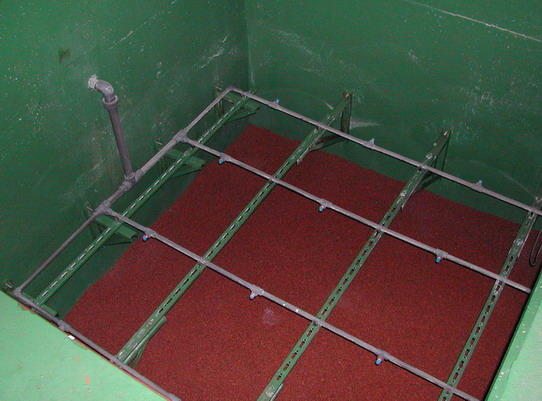Alizair™ / Alizair™ Package Plant
The Alizair™ process avoid the propagation of odors and provide the operating agents with a healthy and safe environment

In the sanitation network, the absence of air (and more precisely of oxygen) makes that wastewater become septic, and also malodorous. Gases are accumulated in the sewer headspace and emission to the open air can occur at the outlet in the treatment plant. Wastewater and its by-product treatment (sludge, scum, etc.) also generate unpleasant smells. The chemical species responsible of the olfactory nuisances are mainly Sulphide, Nitrogenous compounds and, sometimes, Volatile Organic Compounds (VOC). The sulfide compounds mainly come from wastewater pretreatment, thickening and sludge dewatering stages. The nitrogenous compounds and the VOC are mainly from the sludge treatment. To avoid the propagation of odors and provide the operating agents with a healthy and safe environment, the works are put in negative pressure, the polluted air is collected and undergoes a deodorization treatment via the Alizair™ process.
Alizair™ Package Plant
Alizair™ is also available as compact units, ready to be used. There are four different sizes, with maximum flow ranging between 1800 and 6700 m³/h.
Features & Benefits
As it is biofiltration, Alizair™ is usually the least expensive odor removal solution and the easiest to operate. Alizair™ oxidizes the malodorous substances (organic or inorganic) into inorganic and odorless compounds. Alizair™ removes almost all the malodorous compounds. Its efficiency on mercaptans can be improved by the addition of downstream physical or chemical treatment. Alizair™ requires low maintenance and reagent input. Its operating cost is among the lowest in the market. Alizair™ is available in a wide range of flows.
Some Case Studies
- Muret, France, 2014, 10,000 m3/h
- Agen, France, 2013, 12,000 m3/h
- Chatelaillon, France, 2013, 17,500 m3/h
- Lille-Marquette, 2013, 2 x 39,000 m3/h + 2 x 19,800 m3/h
- Sour, Lebanon,2012, 40,000 m3/h
- Henin-Beaumont, France, 2012, 24,760 m3/h
- Lacanau, France, 2011, 24,000 m3/h
- Bruxelles Nord , Belgium, 2007, 296,440 m3/h
- Maidao WWTP Extension , China, 2007, 140,000 m3/h
- Bagnères de Bigorre , France, 2006, 10,000 m3/h
- Ustaritz , France, 2005, 7,500 m3/h
- Beiyuan WWTP, China, 2004, 38,000 m3/h
- Soissons / Tranche2 , France, 2004, 20,000 m3/h
- Budapest Nord 2001-2004, 80 000 m3/h
- Louhans WWTP , France, 2003
- Provins , France, 2003
- Shepton Mallet , UK, 2002
- Villepreux (Val de Gally Ouest), France, 2002
Scope of Application
Process Description
Alizair™ is a biological deodorization process using biofiltration. It operates by bio-oxidation of compounds in the liquid phase. As they pass through the filter, the malodorous molecules are biodegraded by specific microorganisms on the support media. The Alizair™ media rests on a perforated floor which participates in the uniform distribution of the polluted air in the structure. The air to be treated rises through it. Regular watering maintains stable humidity in the filter, nutrients required for biological activity are injected and products from biological oxidation are removed (including sulfates). The water recovered at the bottom of the reactor is recirculated or removed at the plant head.
The Choice of Filter Media
Depending on the elements present in the air to be treated, the bio-deodorization operates with different types of microorganisms, which imply different operating conditions. Through its experience of biological processes, Veolia has been able to develop various packing media to optimize the process performance.
